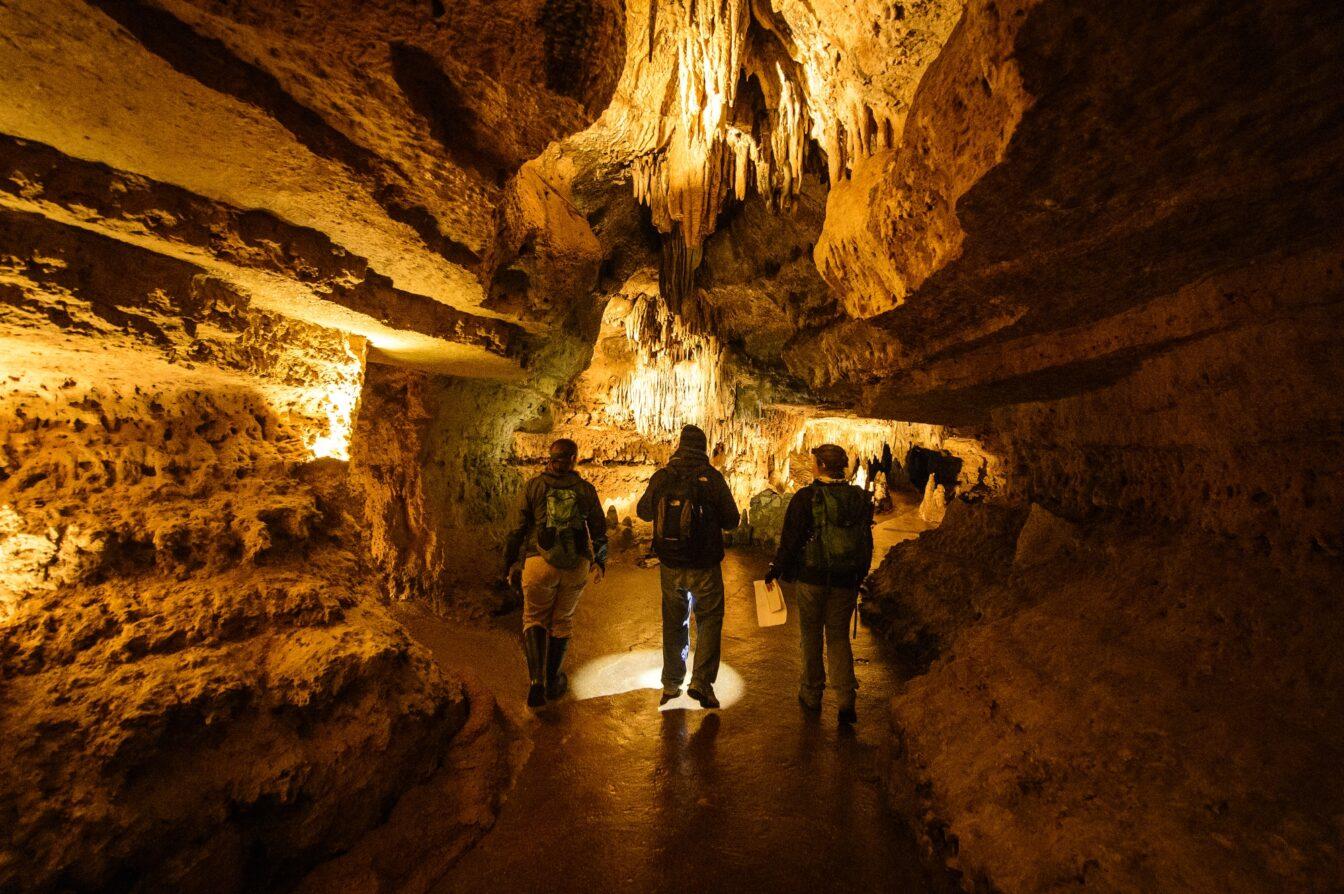A stalagmite sample at the Cave of the Mounds has shed light on the impacts of rapid temperature rise in the mid-continental regions. Former University of Wisconsin grad student Cameron Batchelor’s research on the stalagmite sample provided important insight into temperature change history for thousands of years in Wisconsin.
After sitting untouched for almost 400 million years, a quarry blast in 1939 uncovered the Cave of the Mounds. Since then, the cave has attracted not only researchers, but curious tourists of all ages. The cave is an educational landmark and source of geological history, general manager Joe Klimczak said.
The natural world inside the caves is well-preserved. Years of respectful visitors have taken no toll on the historical site and geological information — though the main goal, according to Klimczak, is effective cooperation with scientists.
“We’re very excited about being cooperative and anything that deepens our understanding of this part of Wisconsin,” Klimczak said.
Batchelor dated the stalagmite using a Secondary Ion Mass Spectrometry instrument from UW professor John Valley’s Lab. Valley said the SIMS instrument provided a more accurate record of data compared to other studies that have been conducted up until recently.
This data gave insight into the climate and weather events happening on top of the Cave of the Mounds throughout the ages, Batchelor said.
Prior to this discovery, there was not much information on how previous climates affected the landscape, Valley said. In the middle of the continent, lack of connection to large water bodies, such as oceans, creates a heat buffer. As a result, on the coastal regions, large sums of melted ice sheets pool into oceans, causing them to be more susceptible to the effects of temperature rise.
According to Batchelor, scientists previously theorized that the mid-continental region was immune to the temperature rise. This study shows this theory is incorrect. The mid-continental regions, like Wisconsin, are just as sensitive and endure the same rapid climate change events.
As a result of glacial erosion from 50-70,000 years earlier, any records of past changes in climate were destroyed in the geological landscape. Batchelor said there is not a large amount of information on rapid temperature rise in mid-continental areas. But, caves remain unaffected by the erosion.
Before excavation of the cave, scientists thought the permafrost, or permanently frozen ground, would not allow water to seep through. Researchers theorized permafrost would not allow for the formation of stalagmite samples in the cave. This is why, five to eight years ago, scientists believed a climate record in the Cave would not exist, according to Valley.
The ability of the caves to seal historical information allows scientists like Batchelor to gain insight into the likely causes of temperature shifts. Valley said researchers believe these events could have been linked to Dansgaard-Oeschger events occurring in the Northern Atlantic area in Greenland. These glacial events occur when large ice sheets cause chaos by releasing large amounts of water into surrounding oceans as a result of the rapid temperature rise.
The ocean is sensitive, so when the northern hemisphere ice sheets melt, this causes the ocean to become less salty, according to Batchelor. The effects of the increase in temperature also pushed the Gulf stream farther north — interacting with the changing climate in the Arctic region.
“It is kind of like a domino effect to other areas of the world because the climate system is connected,” Batchelor said.
The warming event chaos in the Arctic reached the Cave of the Mounds. Klimczak said the data suggests a correlation between the high Arctic latitude climate change and the mid-latitude Wisconsin climate 50,000-70,000 years ago. Associated with these Dansgaard-Oeschger events, Wisconsin also warmed up to 10 degrees Celsius during the warming events, Batchelor said.
For many years, this region of the continent was overlooked for record collection of past climate activity, Valley said. The majority of data relies on global averages and the belief that one regional record represents an entire country. Valley said it emphasizes the need to produce data from all over the world.
Valley said a collective model and data showing the changes temperature rises can have on the earth allows scientists to infer predictions for the future effects of climate change on earth.
UW researchers show one-time reseeding of damaged pine savannah helps restore biodiversity
“We use paleoclimatology to ground the truth,” Valley said.
The climate models are used in government to predict melting of the sea ice caps, rise in sea levels and global warming. Data from past events, like Batchelor’s, allows researchers to test against events for the future, Valley said.
Batchelor said the newly understood impact of temperature rise in this mid-continental North America gives promise to future studies located in this region.
“The Cave of the Mounds will be the location that puts Wisconsin on the map in terms of abrupt climate changes during the last glacial period,” Batchelor said.


